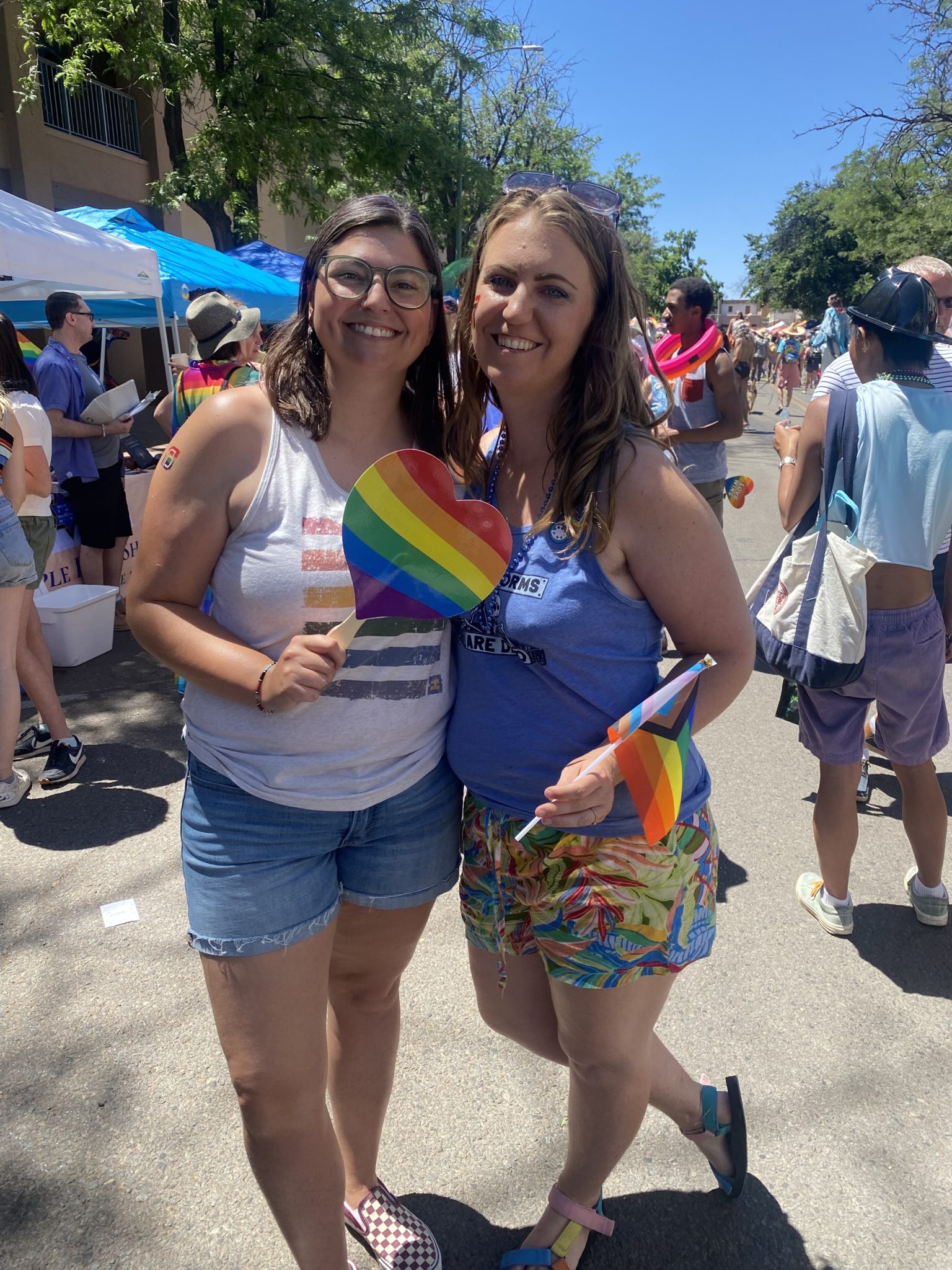Finding a (Gay) Room of One’s Own Wherever We Are

Pride 2024: Seeking Safety Together Is Self Care and Activism
Last month, I was in a very conservative state for a funeral with my fiance. As a queer couple, we stick out there. I experience frequent staring, passive-aggressive comments, and cruel bumper stickers, and signs in shops that are fundraising for homophobic organizations .
While we were there, my fiance and I took her mother’s dog to the dog park. Immediately a person introduced herself to us and, with very little pretense, she asked us if we knew of safe places for “people like us.” We didn’t have to ask what she meant – this kind of coded language is something you pick up on quickly in marginalized communities – and I knew she was hoping we might have suggestions for queer-friendly spaces that are havens from the otherness we are made to feel here.
My first suggestion was that she move somewhere new; Santa Fe (which has one of the highest concentrations of queer families in the U.S.) where I live now has freed me of having to find islands of gay joy because it feels ubiquitous. But, like most Americans, picking up and moving wasn’t an option for her.
So we started brainstorming together! And this is when she declared “This is why I love us! You didn’t hesitate to try and help.” Finding ways to signal your identity and find others like you, seek out safe places, and wrap each other in community is also something you learn early on as part of a marginalized community. It has always been necessary for our survival.
Violence against LGBTQIA+ folks by government and religious leaders has been documented as far back as the 12th century and most assuredly was taking place before then. Pride started out as a fight – by LGBTQIA+ people of color – to maintain the safe places they had built in New York. The Stonewall Uprising, which started in June 1969, was not the first or last time that police raided a gay bar or that gay people fought back, but it marked a point of revolution. On the one-year anniversary of Stonewall, gay organizers intent on being visible hosted the first Pride parade.
Activism continued through the HIV and AIDS epidemic in the 1980s, as we fought for help with the disease ravaging our community. It continued through the 1990s, when “Don’t Ask Don’t Tell” and the Defense of Marriage Act (DOMA) codified ongoing discrimination against queer folks in the military and in marriage. In the 2000s, relentless activism led to progress, including adding gender identity to anti-workplace discrimination laws and the first states legalizing gay marriage. Despite more major wins, like the repeal of “Don’t Ask Don’t Tell” and the Obergefell v. Hodges Supreme Court decision that made same-sex marriage legal in all 50 states, violence and discrimination against LGBTQIA+ folks, and particularly trans folks and people of color, continues at alarming rates. So we continue to share in unwavering joy, activism, and visibility at Pride parades and beyond.
As my fiance and I prepare to get married next month, we are ecstatic that our love is accepted by our family, friends, and community. But we have not stopped strategizing about the safest state to get our marriage license in. Despite the Supreme Court cases and the more recent Respect for Marriage Act of 2022, we do not feel safe everywhere. The scapegoating of queer folks has historic roots that continue to this day. We see parallels between the anti-gay rights movement and the anti-choice movement that successfully repealed Roe v. Wade. We don’t trust that our safety or our legal right to take care of one another is guaranteed. So we continue to seek out our safe places… just in case.